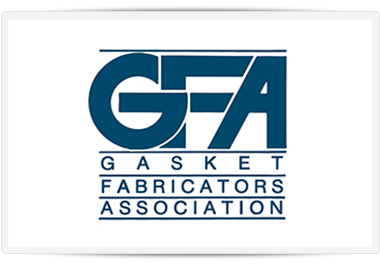For your new gaskets to fit, they must be manufactured to your exact specifications at every production run. In addition to dimensions, designs, and materials specifications - rubber gasket specifications include tolerances. Tolerance is the acceptable deviation from the gasket specification. When you exceed tolerances, your product may not work.
Frank Lowe ensures the reliability of your product by meeting your tolerance requirements.
The Rubber Challenge
The elastomeric properties of natural and synthetic rubber materials make them well-suited for use in sealing gaskets and gaskets for damping vibration.
However, those same properties create a tolerance challenge when die cutting that you don’t face with metal or rigid plastic.
Rubber gasket material naturally compresses and deflects. What do those terms mean? Glad you asked!
Compression
There’s a good chance the engineer specified a rubber gasket because they wanted to take advantage of compression. Compressed rubber keeps a door closed tight or steam held within the pipe flanges. Unfortunately, the compressible nature of rubber elastomers works against the die-cutting process.
As the die presses and cuts through the rubber, the rubber is momentarily compressed and then recovers.
Think of a tomato. The tomato is firm on the outside and hopefully juicy on the inside. But, if you try to slice it with a chef’s knife by applying pressure, the skin compresses, and the sides extrude. A fresh loaf of bread is the same. It is soft on the inside, but the crust provides initial resistance. If you cut a fresh tomato or warm bread with anything but a serrated knife, you’ll end up with a mess.
During the die-cutting process, when the rubber compresses, it can create a concave edge, like an hourglass. Depending on the thickness of the rubber, the concave edge may be obvious, or unnoticeable to the naked eye.
Deflection
During the die-cutting process, the die compresses the top of the rubber more than the bottom. As the rubber recovers from compression, it does not return to the exact same shape as before cutting.
The force of the cut can cause slight deflection or extrusion of the rubber.
The softer the rubber, the greater the compression and deflection. This makes die-cutting rubber more challenging than cutting metal or plastic.
Maintaining tight tolerances requires precision machining and proper material selection. With over 65 years of experience die cutting rubber gaskets, Frank Lowe brings both to the process.
And, even when you need thick material, we work with you to maintain tolerances.
Design Considerations for Die Cut Rubber Gaskets
You’ve carefully considered the environment and temperature the gasket must withstand during use. You’ve calculated for swelling and even regulatory considerations.
It seems like the gasket design is ready to go.
But did you stop to consider the manufacturability of the design? If you only need a handful of gaskets for a single application, it doesn’t make sense to die-cut the gasket. You may be better off with a CNC knife.
However, If your gasket will be manufactured en masse die cutting will be the way to go. This manufacturing process produces consistent parts and keeps the production cost low. So, it’s necessary to consider the actual die cutting of the gasket during the design.
Are the walls incredibly narrow?
Are the bolt holes extremely close to the edge? If so, would an open slot do the job just as well?
Have you specified a row of small holes when a single oval will do?
When you work with Frank Lowe on die-cut rubber gaskets, we review the design and the materials to ensure a good match. If we spot a problem, we don't just point the problem out – we offer a solution.
Maintaining Tolerances and Building Relationships
Work with Frank Lowe, and you work with a converter dedicated to maintaining the tolerances you define and building a lasting relationship.
Consider the rubber gasket link in your supply chain rock solid. We deliver what you want when you want it.






